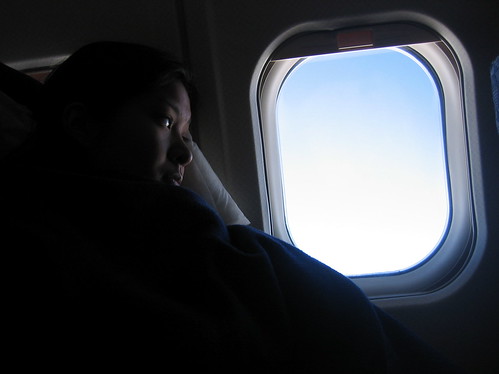Correction: Balitang America Travels Segment on Airplane Precautions aired on January 23rd

Oops, I originally posted that my segment about airline precautions would air on Monday, January 26th on ABS-CBN's The Filipino Channel, but it was actually a part of the Friday newscast on January 23rd. In the segment I interviewed Captain Bob Norris, a former commercial airline pilot who was employed with a major carrier for 30 years. The piece did talk about the harrowing US Airways landing made by pilot Chesley B. "Sully" Sullenberger (whom Katie Couric will interview for a 60 Minutes piece slated for February 8) in the Hudson River, but that wasn’t the focus. I didn’t want to sensationalize the piece or scare people with a dramatized story on how to survive a crash. Instead, the segment aimed to remind travelers about the importance of knowing airline safety measures.
Norris said too often frequent flyers dismiss the pre-flight safety demonstration given by the flight attendants. He pointed out not all airplanes are designed exactly alike: things like the operation of the exit doors and safety rafts can differ, as well as the flotation devices. Yes, there are flight attendants who are trained to take the lead in an emergency. But in a life or death situation you never know what can happen because people panic, and if that's the case, you may need to help yourself.
Norris highlighted the following as being the most important things travelers should keep in mind:
- Identify your exits and how to operate them (even if you’re not seated in an exit row). All of this can be found on the safety cards inside the seat pockets.
- Pay attention to the flight attendants during the safety briefing.
For frequent flyers, it may sound like a broken record, but you’ll be better off knowing all the particular aircraft’s safety features.
- Remember to leave everything behind in an emergency landing. Flight attendants and crew are trained to get everyone off the plane in 90 seconds. Why 90 seconds? It’s the amount of time it takes for a fire to engulf a cabin. In a panicky situation, people can drop bags or items, which can end up blocking the evacuation path, potentially causing a human pile up and endangering lives. In addition, there may not be room for extra weight or baggage on a life raft full of people especially in a water landing. What’s more important: your bag or your life?
I have to admit I’m a nervous flyer. One very bad plane ride is to blame. Not just bad turbulence but a sudden dip that sent a male flight attendant, who was easily 250 lbs., flying upward and smacking his head up against the aircraft ceiling; secured containers in the galley flew out of cabinets and landed with a bang leaving the floor a mess. So, yes, when a major airline incident happens my mind wanders, and I find myself visiting sites like Popular Mechanics which has an article on how to survive a crash.
Don’t get me wrong. I’m not a person who dwells on doom and gloom. I know flying is statistically the safest mode of travel, but I also recognize that accidents happen. All I can say is being aware of all safety measures makes you better prepared to deal with an emergency situation.
Curious about what some say is the safest place to sit in an airplane? Check out this article or take a look at a video of a mock evacuation. Also, here's a recent Time Magazine piece with additional tips on how to cope in an airplane emergency.
Travels is a weekly TV segment written and produced by Christi Morales. It airs every Monday during Balitang America's (News in America) 5:30pm PST newcast on ABS-CBN Global's The Filipino Channel (TFC). Balitang America can also be seen on KTSF Channel 26 at 6:45pm PST in the San Francisco Bay Area.
Labels: air travel, Balitang America Travels, safety

0 Comments:
Post a Comment
Subscribe to Post Comments [Atom]
<< Home